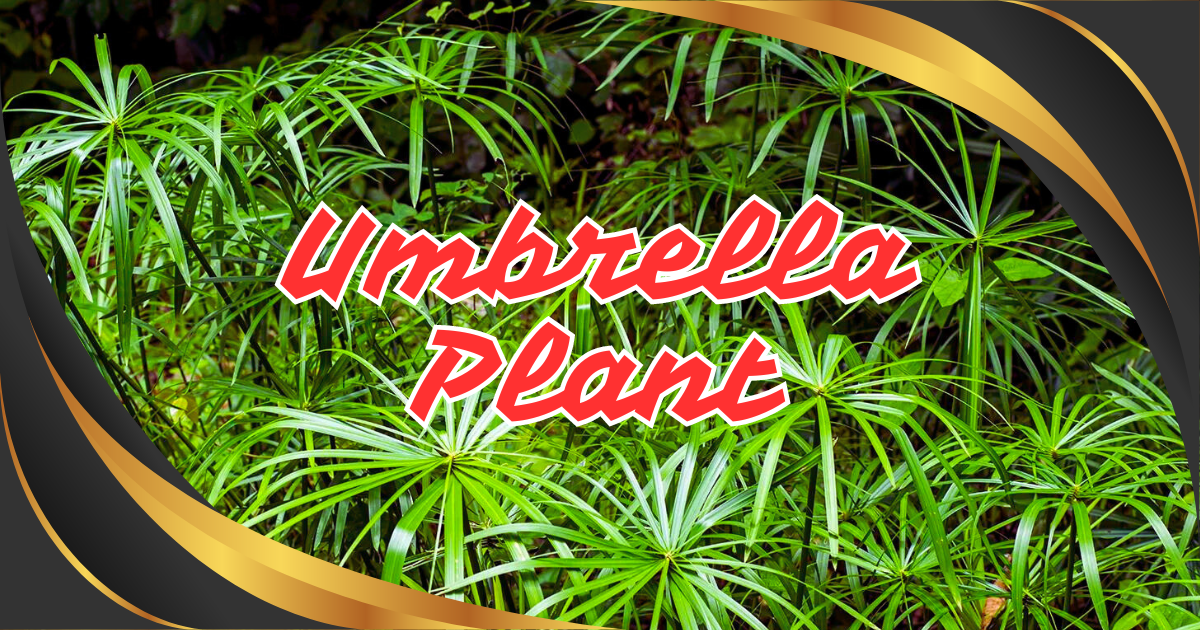Umbrella plants (Schefflera), with their lush, glossy green leaves, are a fantastic addition to any home. Known for their resilience and aesthetic appeal, these plants are relatively low-maintenance, making them popular with both beginner and seasoned plant lovers. However, like any plant, they have specific needs that must be met to ensure they remain healthy and vibrant. In this guide, we will cover 7 powerful tips to help you care for your umbrella plant and keep it thriving indoors.
1. What is an Umbrella Plant?
The umbrella plant, also known as Schefflera or octopus tree, is a tropical plant native to Taiwan and South China. Its name comes from the plant’s unique appearance, as its leaves grow in clusters that resemble the spokes of an umbrella. The two most common types of umbrella plants are Schefflera arboricola (the dwarf variety) and Schefflera actinophylla (the larger variety).
Aside from its aesthetic value, the umbrella plant is known for its ability to purify indoor air, making it not only a beautiful addition but also a functional one.
2. How to Care for an Umbrella Plant: Basic Guidelines
Umbrella plants are fairly easy to care for, but they do have specific needs in terms of water, light, and temperature. Here are the basic care guidelines:
- Light: Umbrella plants thrive in bright, indirect sunlight, although they can tolerate low light conditions. However, too much direct sunlight can scorch their leaves.
- Water: Allow the top inch of soil to dry out between waterings. Overwatering can lead to root rot, while underwatering can cause leaf drop.
- Temperature: These plants prefer warm, humid conditions, ideally between 60°F and 75°F.
By following these basic guidelines, your umbrella plant will grow lush and healthy, providing a beautiful green focal point in your home.
3. Watering Requirements for Umbrella Plants
Watering is one of the most important aspects of umbrella plant care. Improper watering can lead to a range of problems, from leaf drop to root rot. Here’s how to ensure you’re giving your plant the right amount of water:
- Frequency: Water your umbrella plant when the top inch of soil feels dry. Depending on the season and indoor climate, this may mean watering once a week in the warmer months and less frequently in the winter.
- Avoid Overwatering: Overwatering is a common issue with umbrella plants. To avoid this, ensure the pot has drainage holes and never let the plant sit in standing water.
- Humidity Considerations: If you live in a dry climate, consider misting your plant to increase humidity, or place a humidifier nearby.
By maintaining a consistent watering schedule, you’ll help your umbrella plant thrive without risking common watering-related issues.
4. Best Soil and Potting Mix for Umbrella Plants
Choosing the right soil for your umbrella plant is crucial for healthy growth. These plants prefer well-draining soil to prevent root rot and other moisture-related problems.
- Ideal Soil Mix: A light, well-draining potting mix works best. You can mix standard potting soil with perlite or sand to improve drainage. Adding organic matter such as compost can also help enrich the soil.
- Repotting: Repot your umbrella plant every 2-3 years or when it becomes root-bound. Choose a pot that is 1-2 inches larger than the current one and refresh the soil with a fresh mix during repotting.
Proper soil is essential to providing your umbrella plant with the nutrients and drainage it needs to thrive.
5. Light and Temperature Requirements for Umbrella Plants
Umbrella plants thrive in bright, indirect light but can tolerate lower light levels. However, it’s important to monitor how much light your plant receives, as both too much and too little can cause problems.
- Bright, Indirect Light: Place your umbrella plant near a window where it will receive plenty of indirect sunlight. South or east-facing windows are ideal.
- Avoid Direct Sunlight: Too much direct sunlight can scorch the leaves, causing brown spots and damage.
- Temperature: Keep the temperature consistent, ideally between 60°F and 75°F. Avoid placing the plant near drafty windows, air conditioners, or heaters, as sudden temperature changes can stress the plant.
Providing your umbrella plant with the right amount of light and warmth will help it grow strong and healthy.
6. How to Propagate Umbrella Plants
Propagating your umbrella plant is a great way to grow new plants and share them with friends. The most effective method is stem cuttings.
- Step-by-Step Propagation:
- Cut a healthy stem, approximately 4-6 inches long, just below a leaf node.
- Remove the lower leaves, leaving only a few at the top.
- Dip the cut end in rooting hormone to encourage growth.
- Plant the cutting in a well-draining soil mix and water lightly.
- Keep the cutting in a warm, humid environment, ideally with indirect light.
After a few weeks, the cutting should begin to root, and with proper care, it will grow into a new, healthy umbrella plant.
7. Umbrella Plant Pruning Tips
Pruning is important for keeping your umbrella plant bushy and encouraging new growth. It also helps control the plant’s size and shape.
- When to Prune: The best time to prune is during the growing season, typically spring and summer. Pruning encourages the plant to grow denser and prevents it from becoming leggy.
- How to Prune: Use clean, sharp pruning shears to trim back any leggy or overgrown stems. Make cuts just above a leaf node to promote branching.
- Maintenance Pruning: Regularly remove dead or yellowing leaves to keep your plant looking fresh and healthy.
Pruning will not only help your umbrella plant maintain its shape but will also encourage healthier, more…compact growth. You can shape the plant to fit your space while ensuring it stays healthy and vibrant by encouraging new shoots to develop.
8. Common Problems with Umbrella Plants and How to Fix Them
Even with proper care, umbrella plants can face a few common issues. Being aware of these and knowing how to fix them will keep your plant thriving:
- Yellowing Leaves: This is often caused by overwatering. Make sure the soil has proper drainage and allow the top inch to dry before watering again.
- Leaf Drop: Umbrella plants are sensitive to sudden changes in their environment, such as drafts or moving to a new location. Ensure the plant is in a stable, warm spot with consistent light and temperature.
- Pests: Like most houseplants, umbrella plants can be affected by pests such as spider mites or aphids. Use insecticidal soap or neem oil to treat infestations, and regularly inspect your plant for signs of pests.
Addressing these issues early can prevent more serious problems and keep your umbrella plant healthy and strong.
9. Umbrella Plant Indoor Care: Creating the Perfect Environment
When growing an umbrella plant indoors, it’s important to replicate its natural tropical environment as much as possible:
- Humidity: Umbrella plants love humidity. If the air in your home is dry, especially during the winter, consider placing a humidity tray near the plant or using a humidifier to maintain proper moisture levels.
- Light: As mentioned, bright indirect light is best. Rotate your plant every few weeks to ensure even light exposure on all sides.
- Air Circulation: Ensure the plant has good air circulation to prevent mold and mildew growth, but keep it away from drafts or air conditioning vents that could dry it out or cause stress.
With the right care, your umbrella plant will thrive and bring a touch of the tropics into your home.
For more exciting blogs, visit our homepage Magzineco.
10. Conclusion: The Joy of Growing an Umbrella Plant
Caring for an umbrella plant can be a rewarding experience, as its lush, glossy leaves add beauty and life to any space. By providing the right balance of light, water, humidity, and proper pruning, you can ensure your plant thrives for years to come. Whether you’re a seasoned plant lover or a beginner, the umbrella plant is a fantastic choice for brightening your home and purifying the air. With these 7 powerful tips, you’ll have all the knowledge you need to keep your umbrella plant healthy and happy!
FAQs About Umbrella Plants
- What is an umbrella plant?
- An umbrella plant (Schefflera) is a tropical houseplant known for its lush, green, umbrella-like leaves.
- How often should I water my umbrella plant?
- Water your umbrella plant when the top inch of soil feels dry. Avoid overwatering to prevent root rot.
- What type of light is best for an umbrella plant?
- Umbrella plants prefer bright, indirect sunlight. They can tolerate low light but may become leggy if they don’t get enough light.
- Can I propagate an umbrella plant?
- Yes, you can propagate an umbrella plant using stem cuttings. Simply cut a healthy stem and plant it in well-draining soil.
- Why are my umbrella plant’s leaves turning yellow?
- Yellowing leaves are often a sign of overwatering. Ensure proper drainage and let the soil dry out between waterings.
- What type of soil is best for umbrella plants?
- A well-draining potting mix with added perlite or sand is ideal for umbrella plants.
- Do umbrella plants need pruning?
- Yes, regular pruning helps keep your umbrella plant bushy and promotes new growth.
- What are common pests that affect umbrella plants?
- Spider mites, aphids, and mealybugs are common pests that can affect umbrella plants. Regular inspection and treatment with insecticidal soap or neem oil can prevent infestations.
- Can umbrella plants tolerate cold temperatures?
- Umbrella plants prefer warm environments and should be kept away from cold drafts or temperatures below 50°F.
- How do I increase humidity for my umbrella plant?
- You can increase humidity by misting the plant, placing a humidity tray nearby, or using a humidifier.




![Who Is Jessica Dorrell? Scandal, Career, and Latest Updates [2024]](https://magzineco.com/wp-content/uploads/2024/10/Jessica-Dorrell-270x162.png)